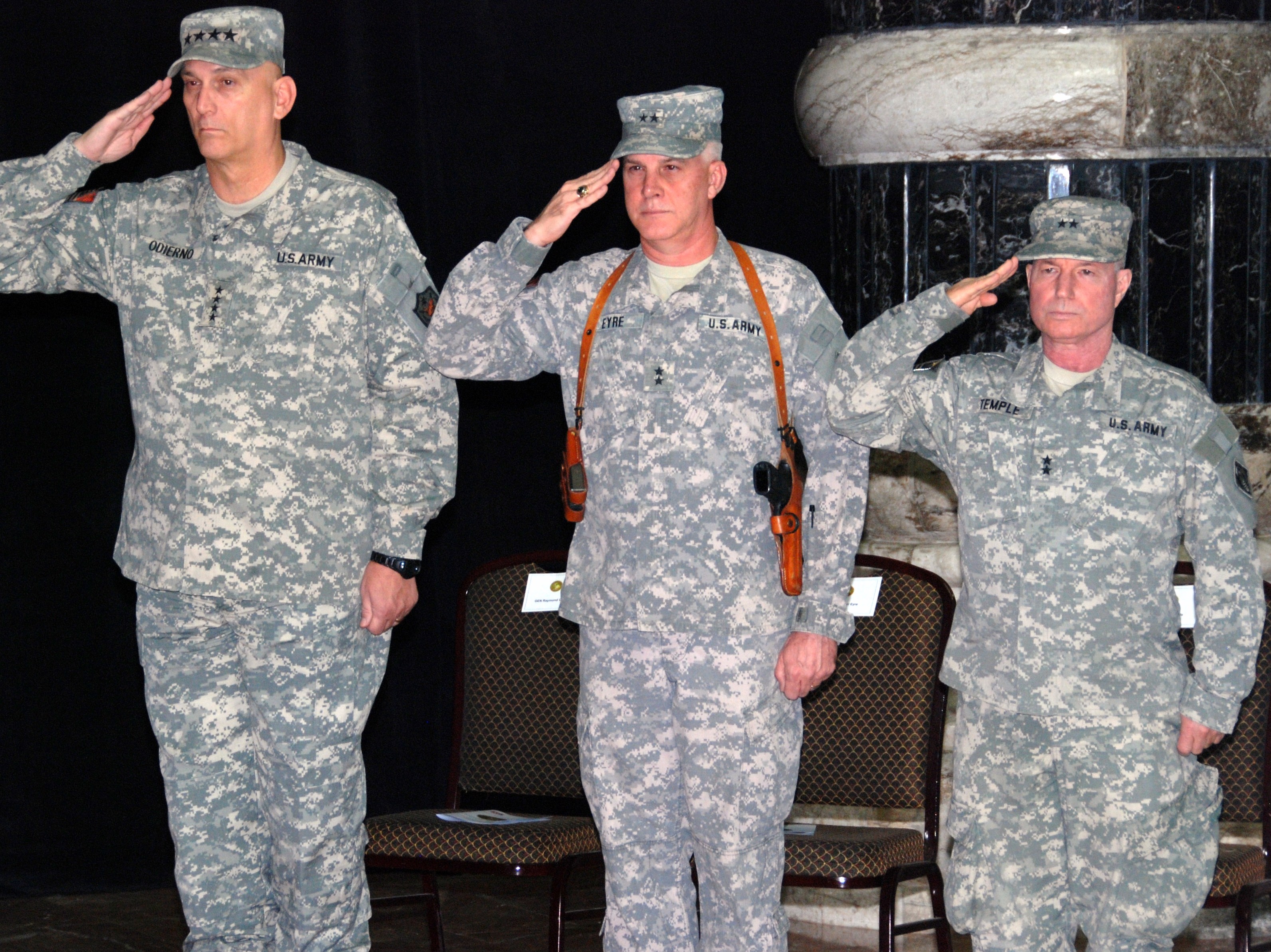BAGHDAD, Iraq -- When Maj. Gen. Michael Eyre and Command Sgt. Maj. Mitch Prater cased the colors of the U.S. Army Corps of Engineers Gulf Region Division in a ceremony at the Al Faw Palace on Oct. 23, 2009, it was not just the end of a unit.
The ceremony marked the end of reconstruction efforts under combat operations and the beginning of reconstruction under stability operations.
Earlier this year, U.S. forces began leaving cities and towns under the U.S.-Iraqi security agreement, and the transition to a responsible drawdown began. Many troops and units have already started returning to their home stations, but the Corps of Engineers' Gulf Region Division is the first division to leave the Iraqi theater as part of the drawdown.
Multi-National Force-Iraq Commander, Gen. Ray Odierno, stressed that the accomplishments of the Gulf Region Division extend far beyond the visible brick and mortar construction projects.
"Your efforts have not been limited to the development of physical infrastructures, but also have included partnerships with the ministries of electricity, housing, construction, municipalities, public works, water resources and oil" he said. "You have vigorously shared your expertise and have helped Iraq make tremendous progress in developing human capital and the technical skills necessary to continue to move forward and build a more vibrant and modern state."
Odierno told the audience that although the inactivation ceremony was a step toward the responsible drawdown of U.S. forces, there is still much work to be done.
"We are not yet finished. Our mission continues, he said. "We are on a road to success, but we still have much work to do to attain that success. Therefore, we will still have a significant engineering presence and a mission here in Iraq."
Since its inception on Jan. 25, 2004, the Gulf Region Division has helped rebuild a war-torn nation that had very few essential services, providing full-spectrum engineer and construction management support to the government of Iraq.
As of Oct. 1, 2009, GRD had completed nearly 5,300 projects valued at more than $9 billion. In fiscal year 2009 alone, the people of the division completed 325 projects valued at nearly $1 billion: 41 school projects, 20 village road projects, 25 water distribution projects, 21 electric distribution projects, 12 police stations, seven court projects, and two military command centers, and numerous others aimed at improving the infrastructure and providing vital services for the people of Iraq.
But according to Maj. Gen. Michael Eyre, commander of the Gulf Region Division, the number of projects is not the true measure of the work his people accomplished.
"This headquarters team is leaving this land, the cradle of civilization, with something so much bigger than any dollar value we can place on projects," said Eyre. "For this nation and its citizens now have hope. These projects are providing electricity, clean water, transportation, police and fire stations, medical care and educational opportunities to the people of Iraq -- things many of us take for granted.
"Although these ceremonies are often bittersweet, I know that today's inactivation means we have done our job in supporting Multi-National Force-Iraq's mission requirements," Eyre continued. "It is a measure of the success of Operation Iraqi Freedom and a testament to the government of Iraq's ability to lead a secure, stable, sovereign and self-reliant nation."
Addressing the remaining members of the GRD team, Eyre reassured them that their hard work and sacrifices enabled the mission transition to stability operations.
"I am inactivating the division today knowing that this is absolutely the right thing to do, and the right time to do it. What we are witnessing this morning is transformation, and the responsible drawdown, before our very eyes. Our work here is something we can all be extremely proud of not only today, but forever. The work each of you performed, individually and collectively, has played an important role in building strong foundations for the future."
With the inactivation of the Gulf Region Division, two Corps of Engineers units will remain in Iraq to finish the reconstruction mission in Iraq: the Gulf Region South District, headquartered in Tallil, and the Gulf Region District, headquartered in Baghdad.
Both come under the command and control of the newly established Transatlantic Division, headquartered in Winchester, Va. The new division unifies all Corps of Engineers programs in the U.S. Central Command operations area -- 20 countries from Egypt through the Arabian Gulf to Central Asia -- and includes two districts in Afghanistan.




Social Sharing